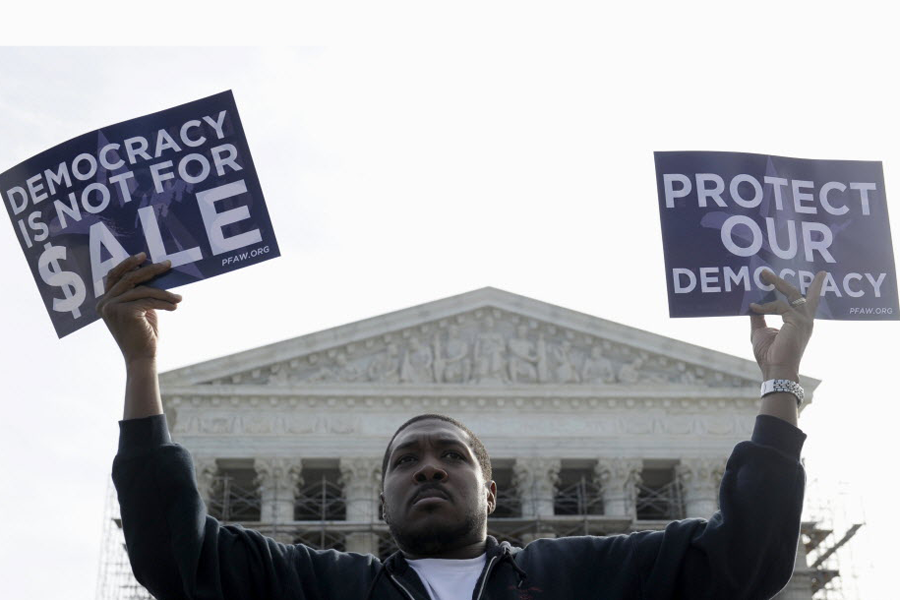Supreme Court ruling on campaign finance: How many donors will it affect?
Loading...
| Washington
The US Supreme Court’s latest ruling on campaign finance has struck down the cap that limited the total amount of money an individual could give federal candidates in an election cycle. This is a huge change in the law that could lead to a surge of new cash flowing into US politics, as many critics of the decision have pointed out.
But how many donors will the decision in McCutcheon v. Federal Election Commission actually affect? That number could be an important factor in determining just how big that influx of money might be.
First, let’s back up and look at that cap, which is now gone with the wind. For the 2013-14 election cycle, individual donors had been limited to a total of $123,200 in hard money federal donations, with no more than $74,500 of that going directly to parties or political-action committees (PACs) and no more than $48,600 of it going to candidates’ committees.
(Donors can’t give more than $2,600 per cycle directly to any candidate. That sublimit remains in place.)
Now, $123,200 is a lot of money to most Americans. You have to be either quite well-off or quite committed to plow that much into political campaigns. This is reflected in the numbers: In the 2012 election cycle, only 646 people hit the donation cap, according to the Center for Responsive Politics.
Theoretically speaking, these 646 donors are now freed of the constraints on their political speech imposed by the old spending cap, in the logic of the 5-to-4 Supreme Court ruling. They can give $2,600 to as many candidates as they want, and more to party and candidate committees.
There is still a cap on their spending, but it is logistical: There are only so many federal candidates and committees in the United States. Total it all up, and an individual can now pump upwards of $7 million into American politics, if he or she feels like it. Of course, that presupposes the person might give to both Republicans and Democrats, as a way of hedging his or her bets. It would be half that if the individual remains reliably partisan.
This is back-of-the-envelope figuring, so it could be a bit more, it could be somewhat less.
So who are these top donors? Well, they are disproportionately Republican. According to an analysis of the top 1,000 donors to federal candidates undertaken by the Sunlight Foundation in 2013, two-thirds support primarily GOP candidates. One-third of them work in the financial sector.
(One caveat: The Sunlight Foundation looked at donors that also give money to “super PACs,” which aren’t affected by the Supreme Court ruling, so the data groups aren’t exactly comparable. But they’re pretty close.)
The great unknown here is dark money. There’s lots of unregulated campaign cash flowing into nonprofit campaign groups that don’t have to reveal who their donors are. It’s possible that the elimination of the caps will suck some of this money out of the dark and into the regulated, more transparent world of hard money donations. This is one reason some think the McCutcheon decision could have some positive aspects.
The elimination of the caps will “not necessarily worsen the campaign finance system, and might even improve it,” writes Ray La Raja, political scientist at the University of Massachusetts, on “The Monkey Cage” political science blog.
One thing is sure: Those 646 rich people are going to be getting more letters and phone calls. It used to be they could say they had maxed out and couldn’t give any more. Now they can’t use that excuse, point out Politico’s Anna Palmer and Tarini Parti, so if they don’t want to pump hundreds of thousands of extra bucks into the system, they’re going to have to just say no.








